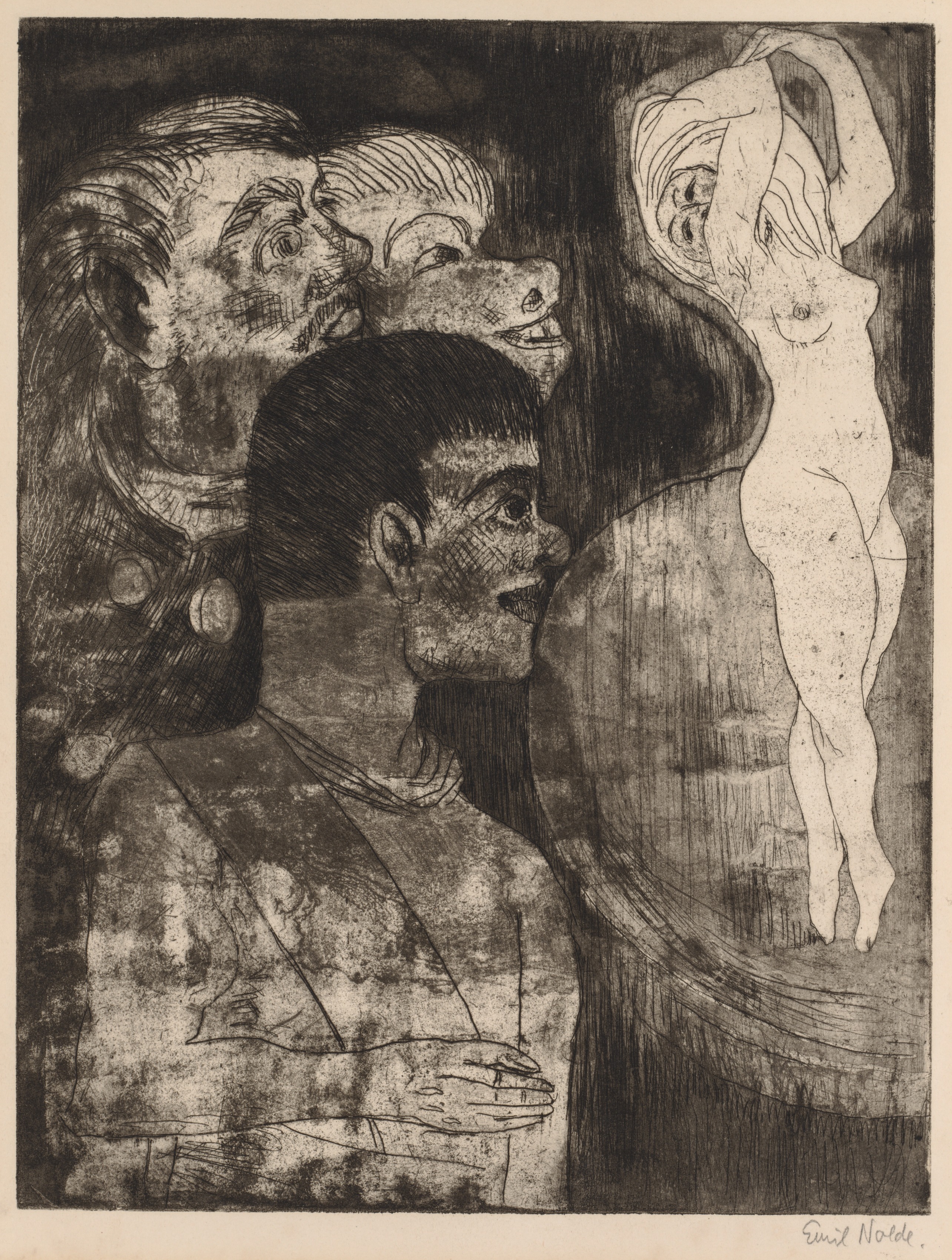The Cleveland Museum of Art
Collection Online as of April 25, 2024

Dancer (Salome)
1922
Location: not on view
Description
The dancer in Emil Nolde’s dreamlike etching is an object of desire. She may be the enchantress Circe, who turned Odysseus’s men into beasts, as suggested by the block-shaped, almost animalistic heads of the onlookers. Nolde unevenly applied the acid-resistant ground and manipulated it with different tools, such as his fingers, a knife, and a fine brush. The resulting grainy tone and texture align with the mysterious subject.- Graphic Discontent: German Expressionism on Paper. The Cleveland Museum of Art (organizer) (January 14-May 27, 2018).Cross Section: Graphic Art in Germany after the First World War. The Cleveland Museum of Art, Cleveland, OH (organizer) (October 10, 1989-January 7, 1990).Eastward from the Rhine: Romanticism to Abstraction, 1800-1925. The Cleveland Museum of Art, Cleveland, OH (organizer) (June 12-September 9, 1984).Graphic Humor. The Cleveland Museum of Art, Cleveland, OH (organizer) (June 1-August 29, 1982).German Expressionist Graphics. The Cleveland Museum of Art (organizer) (May 7-October 5, 1980).The Milieu of Edvard Munch. The Cleveland Museum of Art, Cleveland, OH (organizer) (May 5-June 5, 1977).
- {{cite web|title=Dancer (Salome)|url=false|author=Emil Nolde|year=1922|access-date=25 April 2024|publisher=Cleveland Museum of Art}}
Source URL:
https://www.clevelandart.org/art/1971.307